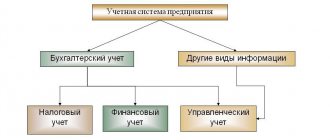Income tax is the main payment for large and medium-sized businesses, as well as some small companies that have not switched to special regimes. This is a direct tax that legal entities pay on what they earn. Let's look at the nuances of determining the base for its calculation, the payment procedure and the rates in force in 2021.
Who pays income tax
Tax payers are:
- Russian organizations applying the main taxation system.
- Foreign companies that have representative offices here, receive income, are residents or are actually managed from the Russian Federation.
Do not pay corporate income tax:
- companies on the simplified tax system and unified agricultural tax;
- organizations from the gambling business;
- Skolkovo residents.
Companies from the first two groups pay other taxes, and the income of Skolkovo participants is completely exempt from taxation.
For legal entities from Russia and foreign companies with representative offices here, taxable profit means the difference between income and expenses. Other foreign organizations do not take into account their expenses, that is, all income they receive in Russia is taxed.
Free tax consultation
Taxpayers
In accordance with Art. Art. 246, 247 of the Tax Code of the Russian Federation, income tax payers are:
- All legal entities of the Russian Federation (OJSC, CJSC, LLC, individual entrepreneur, etc.)
- Foreign legal entities persons working in the Russian Federation through permanent missions or receiving income from sources in Russia.
In accordance with Art. Art. 246.1, 346.1, 346.11, 346.26 of the Tax Code of the Russian Federation do not have to pay income tax:
- Taxpayers using special tax regimes (USN, Unified Agricultural Tax, UTII), as well as those who pay taxes on the gambling business
- Participants of the project “Innovative
The obligation to pay income tax arises only if there is an object of taxation. If there is no profit, you do not need to pay income tax.
For different categories of taxpayers, profit for tax purposes can be different categories of income (Article 247 of the Tax Code of the Russian Federation).
How to calculate tax
The tax calculation formula is standard: Tax base * Tax rate.
But the income tax base is not easy to determine. The algorithm is like this:
- profit or loss from sales is calculated;
- profit or loss from non-operating transactions is calculated;
- final tax base: profit (loss) from sales + profit (loss) from non-operating transactions - losses from previous years that can be carried forward to the current period.
If past periods ended in negative territory, losses can be fully or partially deducted from the tax base.
The main task in calculating income tax is to correctly determine income and expenses.
Calculation formula
All step-by-step instructions on how to calculate income tax come down to using formulas. You will find the figures for them in the balance sheet and in the reporting. To calculate the amount of income, use the formulas:
TNP = D – PNO + SHE – IT;
TNU = R – PNO + SHE – IT,
Where:
- D - enterprise income;
- R - expenses of the enterprise;
- PNO - permanent tax obligations;
- ONA - deferred tax assets;
- ONO - deferred tax liabilities;
- TNP - current income tax;
- TNU - current tax loss.
Income that is included in tax calculations
Income for this purpose is divided into two groups: from sales and non-sales. The organization receives income from sales as follows (Article 249 of the Tax Code of the Russian Federation):
- from the sale of their goods, works, services, property rights;
- reselling previously purchased goods.
All other income is considered non-operating income. This is, for example, income from equity participation in other companies, from leasing property, interest on deposits, and others.
Not all profits are subject to tax - a list of exceptions is given in Article 251 of the Tax Code of the Russian Federation. It is exhaustive, that is, if some type of income is not included in this article, then it is taxed. There are quite a lot of non-taxable incomes, here are just a few:
- prepayment;
- property received as collateral or deposit;
- credit and borrowed funds;
- everything that is transferred in the form of a contribution to the authorized or share capital.
Classification of expenses that reduce profit
Depending on the nature of the costs, as well as the operating conditions of the organization, costs are divided into:
- to those related to production and sales (let’s call them production);
- non-operating expenses.
There are cases when some costs with equal grounds can be attributed simultaneously to several groups of costs. Then the organization has the right to determine for itself which group it will classify them in (clause 4 of Article 252 of the Tax Code of the Russian Federation). As an example, we can cite some bank commissions, which can be considered both production (subclause 25, clause 1, article 264 of the Tax Code of the Russian Federation) and non-operating expenses (subclause 15, clause 1, article 265 of the Tax Code of the Russian Federation).
Costs associated with production and sales
Production costs include (clause 1 of Article 253 of the Tax Code of the Russian Federation):
- Costs associated:
- with the manufacture (production), storage and delivery of goods,
- performance of work, provision of services,
- acquisition and (or) sale of goods (work, services, property rights).
- Expenses for the maintenance and operation, repair and maintenance of fixed assets and other property, as well as for their maintenance in good (up-to-date) condition.
- Expenses for the development of natural resources.
- Research and development expenses.
- Expenses for compulsory and voluntary insurance.
- Other costs associated with production and (or) sales.
These expenses, in turn, can also be divided into several types:
- Material costs.
These include, among other things, acquisition costs (Article 254 of the Tax Code of the Russian Federation):
- production raw materials and supplies, i.e., what is used directly in the production of goods (performing work, providing services) and forms the basis of the product or is a necessary component;
- auxiliary materials used for packaging and other preparation of goods (including pre-sale) and necessary for other production and economic needs, in particular for testing, control, maintenance, operation of fixed assets, etc.;
- tools, fixtures, equipment, instruments, laboratory equipment, workwear and other personal and collective protective equipment provided by law, and other property that is not depreciable;
- components undergoing installation and semi-finished products undergoing additional processing;
- fuel, water, energy;
- production works and services;
- environmental materials for the maintenance and operation of fixed assets and other environmental property.
- Labor costs.
The main expenses are (Article 255 of the Tax Code of the Russian Federation):
- wages themselves, that is, accruals at tariff rates, official salaries, piece rates or as a percentage of revenue - in accordance with the forms and systems of remuneration accepted by the taxpayer;
- accruals of an incentive nature (bonuses for production results, bonuses to tariff rates and salaries for professional excellence, high achievements in work and other similar indicators);
- accruals of an stimulating or compensating nature related to working hours and working conditions (allowances for night work, long shifts, overtime work, combined work, difficult and harmful working conditions);
- vacation pay, as well as compensation for unused vacation;
- dismissal payments;
- some insurance payments in favor of employees;
- remuneration of freelancers (except for individual entrepreneurs) for performing work under civil contracts;
- contributions to the reserve for the upcoming payment of vacations to employees, payment of annual remuneration for length of service and based on the results of work for the year;
- other expenses in favor of employees provided for by the labor or collective agreement.
- Amounts of accrued depreciation.
For income tax purposes, property is considered depreciable (clause 1 of Article 256 of the Tax Code of the Russian Federation):
- which the company owns by right of ownership (unless otherwise provided for in Chapter 25 of the Tax Code of the Russian Federation),
- used to generate income
- with a useful life of more than 12 months,
- original cost of more than 40,000 rubles.
Read more about depreciation in the articles “Linear method of calculating depreciation of fixed assets (example, formula)” and “Depreciation bonus in accounting and tax accounting”.
- Other expenses.
These are all other expenses that are associated with production and sales, but are not included in the previous groups. Their approximate list is contained in Art. 264 Tax Code of the Russian Federation. Among them:
- taxes, fees and contributions for compulsory social insurance, paid on the basis of federal law dated July 24, 2009 No. 212-FZ;
- expenses for ensuring normal working conditions, as well as expenses for the treatment of occupational diseases of workers engaged in work with harmful or difficult working conditions, as well as expenses associated with the maintenance of premises and equipment of health centers located directly on the territory of the organization ( see also “Is it possible to take into account expenses for equipment of a rest room?” );
- recruitment costs, including recruitment services;
- rental and leasing payments;
- related to the maintenance of official vehicles and compensation to employees for the use of personal cars;
- travel and entertainment expenses;
- expenses for legal, information, consulting, auditing services;
- payment for communication services;
- advertising expenses
- other production costs (provided that they comply with the requirements of Article 252 of the Tax Code of the Russian Federation).
Non-operating expenses
The second group of expenses taken into account for taxation are non-operating expenses. They are not directly related to the production process and sales of GWS. This is, in particular (clause 1 of Article 265 of the Tax Code of the Russian Federation):
- interest on all debt obligations;
- deductions to the reserve for doubtful debts using the accrual method ( see “Reserve for doubtful debts: the procedure for creating and calculating deductions” );
- expenses for liquidation of fixed assets decommissioned, write-off of intangible assets, including amounts of underaccrued depreciation;
- fines, penalties, other sanctions for violation of contractual or debt obligations, as well as costs for compensation for damage caused;
- premiums (discounts) paid (provided) to the buyer for fulfilling certain terms of the contract, in particular the volume of purchases, etc.
Also, losses are equated to non-operating expenses (clause 2 of Article 265 of the Tax Code of the Russian Federation):
- past tax periods identified in the current one;
- bad debts, including those not covered by the “doubtful” reserve;
- losses from downtime due to internal production reasons;
- losses from downtime due to external reasons not compensated by the culprits;
- shortages of material assets in the absence of perpetrators, as well as losses from theft, the perpetrators of which have not been identified;
- losses from natural disasters, fires, accidents and other emergencies, including costs associated with preventing or eliminating the consequences of natural disasters or emergencies;
- losses on the transaction of assignment of the right of claim ( see “Losses from the assignment of the right of claim from January 1, 2015 are taken into account according to the new rules” ).
Costs involved in calculating the base
Expenses are considered expenses supported by documents, as well as losses. Expenses are also divided into 2 groups:
- related to production and sales;
- non-operating.
“Production” expenses include everything that an organization spends on the production of its goods, works or services, as well as on their sale. Such expenses may be:
- direct - these are material costs, labor costs, depreciation;
- indirect - these are other costs associated with sales.
Non-operating expenses are listed in Article 265 of the Tax Code of the Russian Federation. For example, these are the costs of maintaining leased property, interest on debt obligations, negative exchange rate differences, and others. If any type of costs not related to sales is not listed in the article, then it cannot be deducted from income.
In addition, there are expenses that do not reduce the tax base. Article 270 of the Tax Code of the Russian Federation provides a closed list of them. For example, these are dividends to owners, penalties to the budget, contributions to the authorized capital, expenses for voluntary insurance and many other costs.
What expenses are deducted from income?
To find out the amount of net profit, income is subtracted from expenses. All expenses must be confirmed and economically justified. To do this, the accountant must correctly prepare and maintain primary and tax documentation. When calculating profit, the following costs are taken into account:
- production;
- general economic;
- representative;
- transport;
- advertising, but not more than 1% of sales revenue;
- expenses for training and advanced training of personnel;
- interest on loans and credits.
Date of determination of income and expenses
The dates on which income and expenses are recognized are important for tax calculation. This determines whether the taxpayer can take them into account in the period for which corporate income tax is calculated. There are two methods for determining when income and expenses are recognized:
- Accrual method. Income/expenses are accepted in the period in which they occurred. It does not matter when the funds for them were actually received or spent on them.
- Cash method. Income/expenses are recognized on the day they are actually received or written off.
By default, the accrual method is used. In this case, direct and indirect expenses are taken into account when calculating income tax in different ways:
- Direct costs are divided between the cost of goods in process and goods that are manufactured. It is possible to reduce the tax base due to direct expenses only as the finished products are sold;
- indirect expenses of the current period are written off in full, without any distribution.
There is no such division under the cash method. But it can only be applied to organizations whose average sales revenue over the previous four quarters did not exceed 1 million rubles for each quarter.
Calculation formula
Each commercial organization must provide reporting on income and expenses to the tax authorities in accordance with current legislation. To calculate taxable profit as accurately and accurately as possible, an enterprise will need an experienced accountant, since it is necessary to process a huge amount of documentation and use special computer programs. Otherwise, errors may occur that can affect the final result and lead to negative consequences, for example, penalties and fines.
To calculate the amount from which mandatory payments will be deducted to the state budget, you need to calculate gross income. This indicator is calculated as the difference between all receipts of the enterprise and the cost of goods produced or services provided. The simplified formula for taxable income is as follows: tax interest is deducted from gross income. The expanded formula can be expressed as follows:
Pn = Pb – Nn – Pd – Pl, where Nn is the real estate tax, and the remaining designations represent different types of profit:
- Mon – taxable,
- Pb – balance sheet;
- Пд – profit on additional tax obligations;
- Pl – income focused on operations that fall under the category of benefits (funds allocated to charity or the elimination of natural or technological disasters).
Sometimes, when calculating actual taxable income, financial data that reflects additional income is used. Such income includes revenue received through the use of securities or other income.
Tax rates
The main, but not the only, income tax rate is 20%. It is distributed between the budgets of two levels. The 2021 income tax is divided as follows: 3% - to the federal budget, 17% - to the regional budgets. After 2024 the distribution will change. Below is a detailed table of rates.
| What does the rate apply to/when does it apply? | Bet size |
| Basic rate (applies unless otherwise stated) | 20%, which is divided this way:
By decision of the authorities of the subject, for certain organizations the rate can be reduced to 12.5% (after 2024 - to 13.5%) |
| Profit on certain securities of Russian companies | 30% |
| Profit from hydrocarbon production from a new offshore field | 20% goes entirely to the federal budget |
| Some income of foreign organizations | |
| Income from state, municipal and other securities | 15% (for some municipal securities 9%) |
| Dividends of a foreign company on Russian shares or from participation in a company from the Russian Federation | |
| Dividends of a Russian organization | 13% |
| Income from depositary receipts | |
| Selected rental income from foreign organizations | 10% |
| Income of agricultural producers, medical and educational organizations, social services and more. The full list is in Article 284 of the Tax Code of the Russian Federation | 0% |
The tax period for this payment is a calendar year. Organizations must calculate and pay advances on income tax monthly or quarterly.
Defaulters - “Sochi residents”
This category of profit tax evaders includes organizations that are (clause 2 of Article 246 of the Tax Code of the Russian Federation):
- Foreign organizers of the XXII Olympic Winter Games and XI Paralympic Winter Games 2014 in Sochi, in accordance with Art. 3 of Federal Law No. 310-FZ of December 1, 2007 (the preference is valid in the period 2008–2016).
- Foreign marketing partners of the International Olympic Committee (IOC), in accordance with Art. 3.1 of Law No. 310 (in the period 2010–2016) - in relation to income received in connection with the organization and holding of the Olympic and Paralympic Games.
- Official broadcasting companies, in accordance with Art. 3.1 of Law No. 310, - in relation to income received under contracts concluded with the IOC or an organization authorized by it:
- from the production of media products during the organization of the games (from July 5, 2007 to December 31, 2021);
- from the production and distribution of media products (including official television and radio broadcasting, including digital and other communication channels) during the period of the Games (1 month before the start of the opening ceremony of the Olympic Games, the time of the Games and 1 month after the end of the closing ceremony Paralympic Games).
Quarterly payment of advances
Taxpayers whose sales income over the previous four reporting periods did not exceed an average of 15 million rubles per quarter have the right to pay an advance on income tax once a quarter. Payments are made no later than the 28th day of the month following the end of the quarter. If this day falls on a weekend, the deadline will be postponed. For legal entities falling under the terms of quarterly payment, the calculation is made as follows:
- at the end of the first quarter, the advance payment is calculated and paid - until April 28;
- at the end of 6 months, the advance payment for six months is calculated, from the amount received, what was paid at the end of the first quarter is subtracted - until July 28.
At the end of 9 months, the calculation is made in the same way.
For example, in the first quarter the company earned 100,000 rubles, and in the second quarter - 140,000 rubles. Let's calculate advance payments:
- advance for the first quarter: 100,000 * 20% = 20,000 rubles;
- half-year base: 100,000 + 140,000 = 240,000 rubles;
- advance payment for six months: 240,000 * 20% = 48,000 rubles;
- the taxpayer must pay by July 28: 48,000 - 20,000 = 28,000 rubles.
Freeing up to innovate
Organizations that have received the status of participants in a project to carry out research, development and commercialization of their results in accordance with Federal Law dated September 28, 2010 No. 244-FZ “On Innovation” can apply an exemption from the duties of income tax payers. The exemption is valid for 10 years from the date of receipt of project participant status. The procedure and conditions for applying the exemption are established by Art. 246.1 Tax Code of the Russian Federation.
The exemption can be used from the first day of the month following the month in which the status of a project participant was obtained (clause 4 of Article 246.1 of the Tax Code of the Russian Federation).
The tax authority must be notified of its use. To do this, no later than the 20th day of the month following the month from which the exemption is used, the following must be sent to the inspectorate at the place of registration (clauses 4, 7 of Article 246.1 of the Tax Code of the Russian Federation):
- written notification (in the form approved by order of the Ministry of Finance of Russia dated December 30, 2010 No. 196n, Appendix No. 1);
- documents confirming the status of a participant in the Skolkovo project;
- an extract from the book of income and expenses (financial performance report), confirming the annual volume of revenue from the sale of goods (work, services, property rights). The volume of revenue should not exceed 1 billion rubles (clause 2 of Article 246.1 of the Tax Code of the Russian Federation).
The same documents should be submitted to the inspectorate at the end of the tax period in which the exemption was used, along with a notice of extension of the use of the right to exemption for the next period or refusal of the exemption. The deadline for sending is no later than the 20th day of the month following the tax period in which the exemption was applied (clause 6 of Article 246.1 of the Tax Code of the Russian Federation).
If the documents are not sent or contain false information, you need to restore the income tax, pay it to the budget, and also transfer penalties. According to the Ministry of Finance, organizations that submit documents later than the deadline should do the same (letter of the Ministry of Finance of Russia dated June 20, 2012 No. 03-03-06/1/316).
See also “How to calculate and reflect penalties for income tax?”
The right to release can be lost for 2 reasons (clause 2 of article 246.1 of the Tax Code of the Russian Federation):
- in case of loss of the status of a project participant - from the first day of the tax period in which such status was lost;
- if the annual revenue exceeds 1 billion rubles - from the first day of the tax period in which the specified excess occurred.
The tax for the tax period in which the status of a project participant was lost or the total amount of profit received by a project participant exceeded 300 million rubles will have to be restored and paid to the budget with the corresponding penalties (clause 3 of Article 246.1 of the Tax Code of the Russian Federation).
Voluntary refusal of release is also possible (clause 5 of Article 246.1 of the Tax Code of the Russian Federation). To refuse it, you need to send to the inspectorate the notification provided for by Order of the Ministry of Finance of the Russian Federation dated December 30, 2010 No. 196n (Appendix No. 1). This should be done no later than the first day of the tax period from which the waiver of exemption is planned. However, it must be remembered that someone who has repeatedly refused it will no longer be able to obtain exemption.
In 2012-2018, certain categories of taxpayers were exempt from paying income tax. These included organizations associated with:
- holding the XXII Olympic and XI Paralympic Games 2014 in Sochi;
- holding the 2021 FIFA World Cup and the 2021 FIFA Confederations Cup in the Russian Federation.
Let's consider this point in more detail.
Monthly payment of advances
For legal entities that do not have the right to quarterly payments, there are 2 options for calculating monthly payments:
- based on the profit for the previous quarter with an additional payment based on the results of the period;
- based on actual profit.
By default, the first method will be used. In order to calculate advance payments based on actual profits, you must submit a free-format notification to the Federal Tax Service no later than the end of the year.
The essence of the first method is as follows. In the current quarter, you need to pay as much in advance as was accrued for the previous one. This amount is divided into three parts and paid in each month of the quarter. When it ends, you should calculate the amount of tax based on how much profit was made and make an additional payment.
Let's give an example. Let the tax accrual for the fourth quarter of last year amount to 30,000 rubles. In January, February and March of this year, the company had to pay 10,000 rubles. At the same time, in the first quarter she earned 160,000 rubles. The tax payable is 160,000 x 20% = 32,000 rubles. However, 30,000 of them have already been paid, so you only need to pay an additional 2,000 rubles.
With the payment method based on actual profit, the advance amount is calculated at the end of each month on an accrual basis from the beginning of the year. That is, in February the tax for January is calculated and paid, in March - for January + February, taking into account what was paid earlier, and so on.
For example, the taxable income of an organization was:
- for January - 90,000 rubles;
- for February - 150,000 rubles;
- for March - 120,000 rubles.
At the end of each month you must pay:
- in February for January: 90,000 * 20% = 18,000 rubles;
- in March for January and February: (90,000 + 150,000) * 20% - 18,000 = 30,000 rubles;
- in April - for January, February and March: (90,000 + 150,000 + 120,000) * 20% - (18,000 + 30,000) = 24,000 rubles.
Calculation
The basic formula for corporate income tax is:
NP = C * B,
Where
- NP - income tax;
- C - rate;
- B is the basis for calculation.
Kolibri LLC produces and sells soft toys. Let's find out the amount of tax that the company will pay for 2021 if:
- The LLC received a bank loan for 500,000 rubles;
- sold toys for 1,200,000 rubles including VAT;
- used raw materials for production worth 350,000 rubles;
- paid wages to workers in the amount of 250,000 rubles;
- insurance premiums amounted to 40,000 rubles;
- carried out depreciation in the amount of 30,000 rubles;
- paid interest on the loan in the amount of 25,000 rubles;
- wants to take into account last year’s loss of 120,000 rubles.
Expenses of Kolibri LLC in 2021:
Since income is calculated without VAT, it will be 1,000,000 rubles at a VAT rate of 20%. And 200,000 rubles is the amount of VAT that the LLC will transfer to the state. Loan amounts are not subject to contributions; they are simply not included in the tax base under paragraphs. 10 p. 1 art. 251 Tax Code of the Russian Federation. 500,000 rubles of loan are not considered income.
Then the profit of Kolibri LLC in 2021:
This is income minus expenses and minus last year's loss.
Calculation using the formula:
Of which go to the budget of the Russian Federation:
Goes to the regional budget:
We use the example of Kolibri LLC below to show calculations using an online calculator.
The convenient 1C:BusinessStart application allows you to automatically calculate tax amounts; you do not need to monitor changes in rates, the service is updated automatically, taking into account the latest changes in legislation. The program will warn you about the deadlines for submitting reports and paying taxes, and will tell you what and how to do.
Reporting
Everyone who pays corporate income tax submits a declaration to the Federal Tax Service. The frequency of filing within the reporting year depends on how advance payments are made:
- if monthly, based on actual profit, declarations must be submitted by the 28th of the next month (12 declarations per year);
- if quarterly or once a month, but based on data for the previous period, declarations must be submitted based on the results of the first quarter, half a year, 9 months. The last day of submission is the 28th of the month following the end of the quarter.
Everyone must submit their annual declaration by March 28 of the year following the reporting year. Payment of income tax calculated at the end of the year is also made before this date. That is, income tax for 2021 will need to be paid no later than March 28, 2022.
Local taxes and fees
The effect of local taxes is regulated by the Tax Code of the Russian Federation and regulations drawn up at the municipal level. These taxes include land tax and personal property tax. And since 2015, a trade tax has been introduced into this group (law dated November 29, 2014 No. 382-FZ).
Read about the procedure and deadlines for paying the trade fee in the materials in the “Trade Fee” section.
Note! From 2021, the deadlines for paying transport and land taxes have become the same, because... regulated at the federal level. They are no longer approved by local and regional authorities. See here for details.
Funds used to pay taxes go to local budgets.
What is the difference between a tax and a fee?
The differences between a tax and a fee are as follows:
- The fee is levied in connection with the payer's desire to have a certain right (license or permit). For example, a trade fee (collected only in Moscow, i.e. it is a local fee) for the right to use objects for trade.
- Fees are one-time in nature, and taxes are paid periodically.
- The purpose of collecting a fee is to compensate for additional budget expenses associated with the provision of specific public legal services to a specific payer.
Insurance premiums
From 2021, Chapter was introduced into the Tax Code. 34, which provides for the payment of insurance contributions for pension, medical, social insurance for temporary disability and in connection with maternity (Law No. 243-FZ dated 07/03/2016). Until 2017, these contributions were paid to the budget of the Pension Fund and the Social Insurance Fund, respectively.
Payers of insurance premiums are listed in Art. 419 of the Tax Code of the Russian Federation, the object of taxation is specified in Art. 420, and the contribution rates are listed in Art. 425–430 Tax Code of the Russian Federation.
Find answers to questions related to the calculation, payment and reporting of insurance premiums in the “Insurance Premiums” section.






